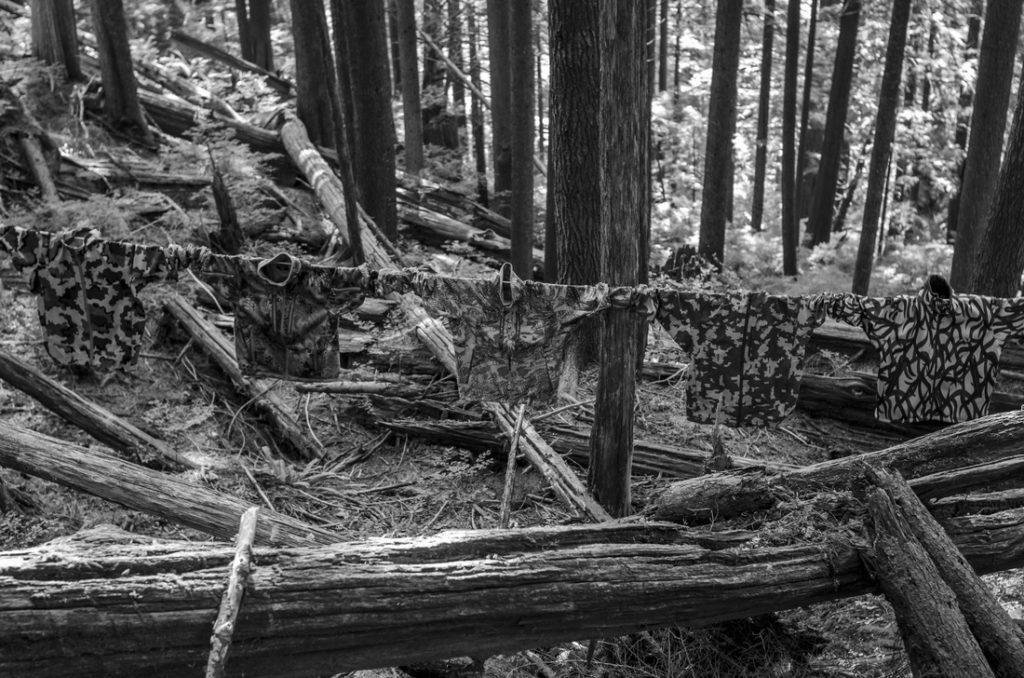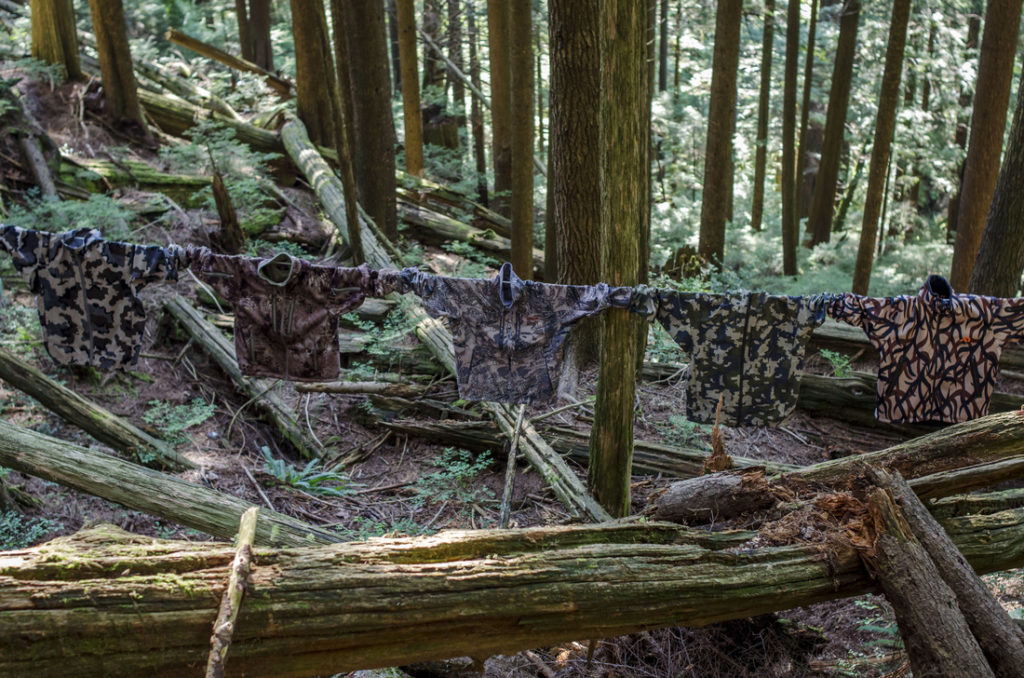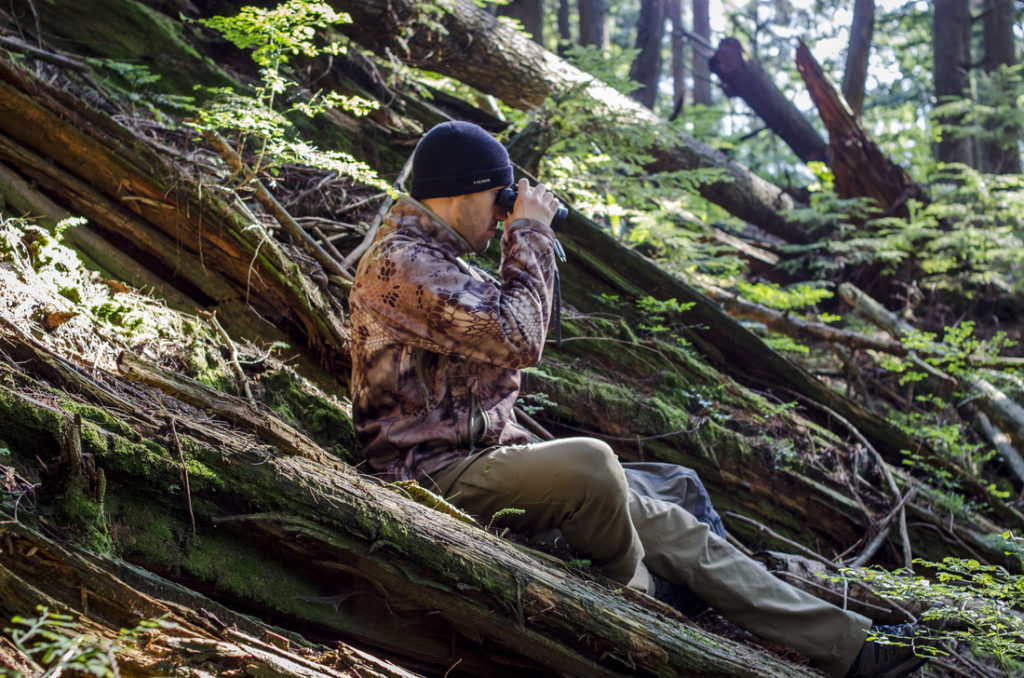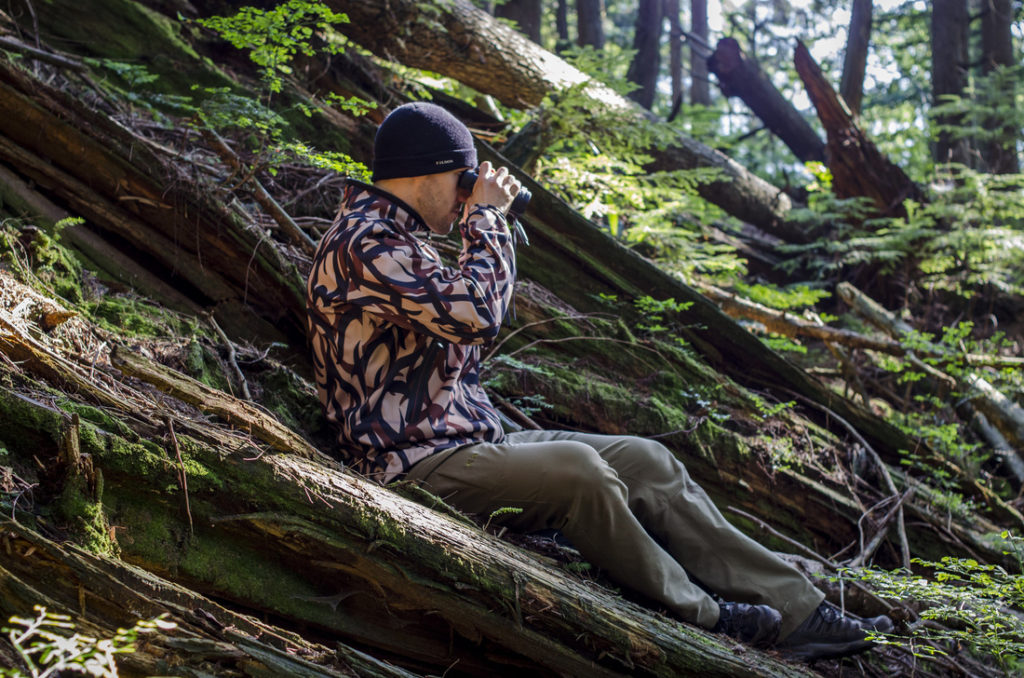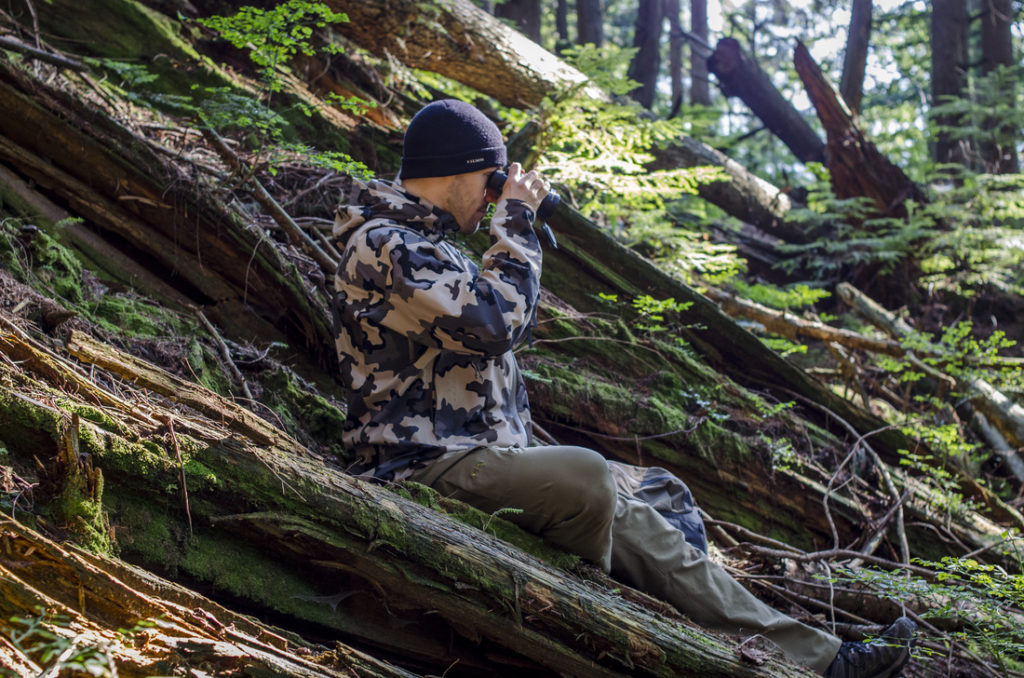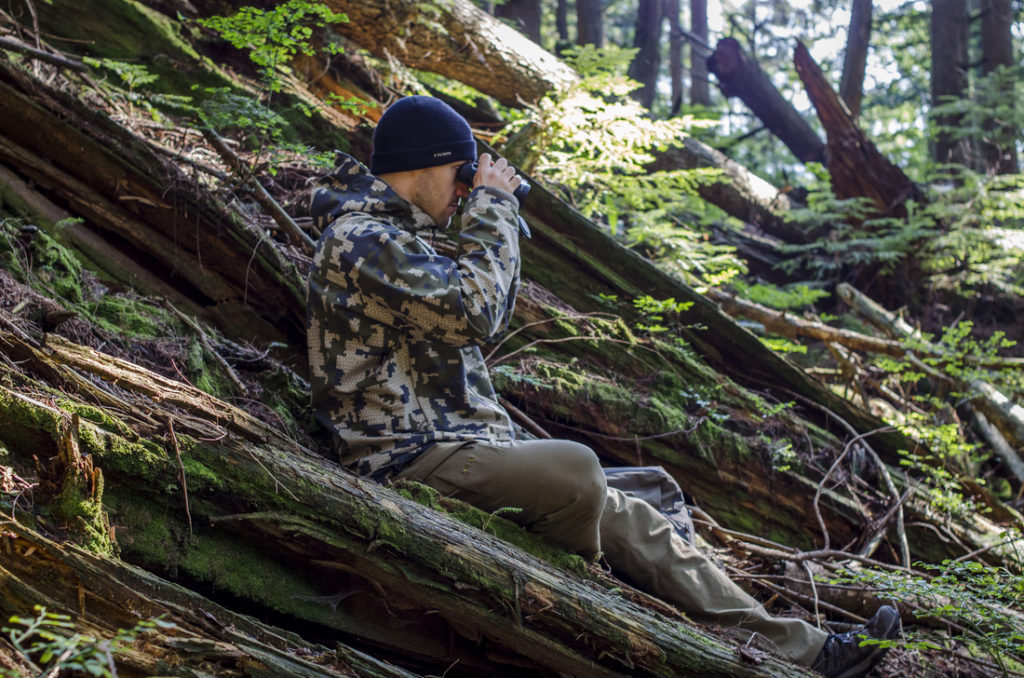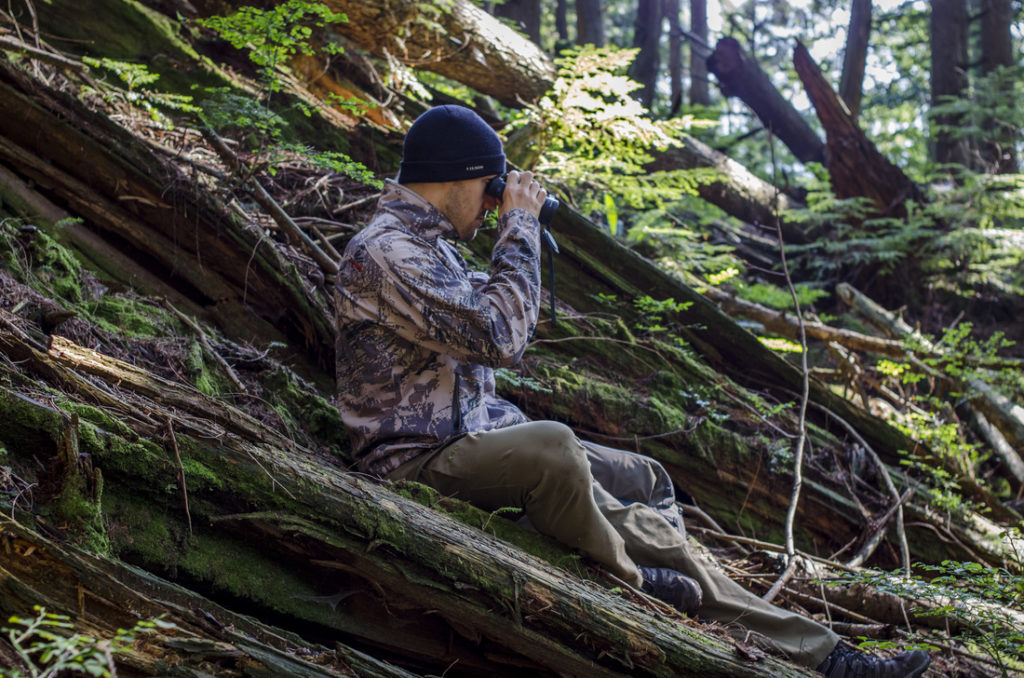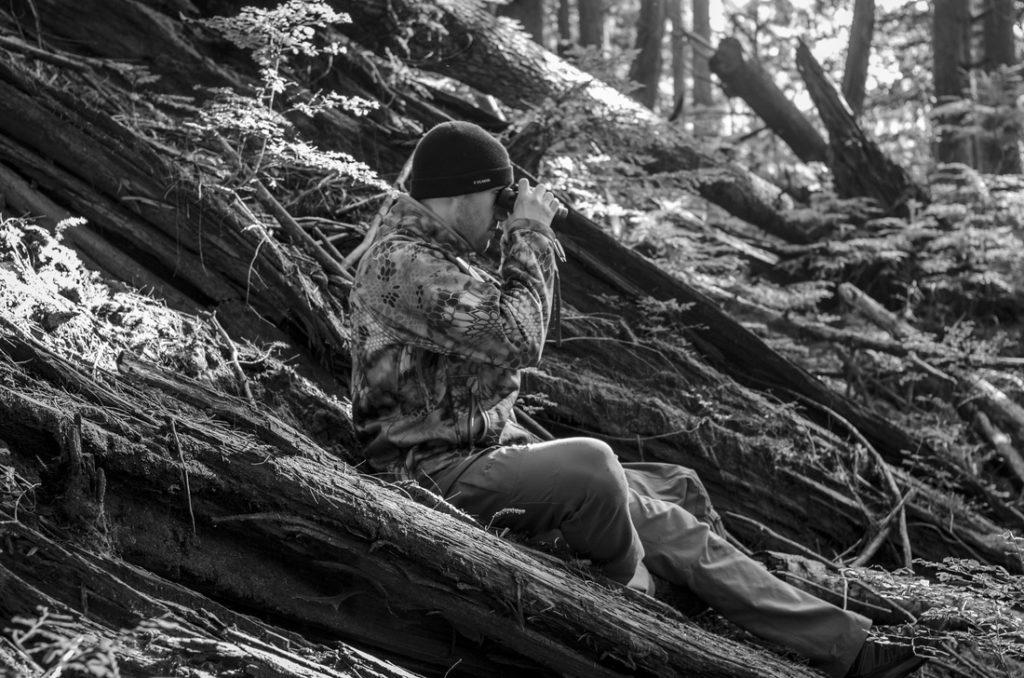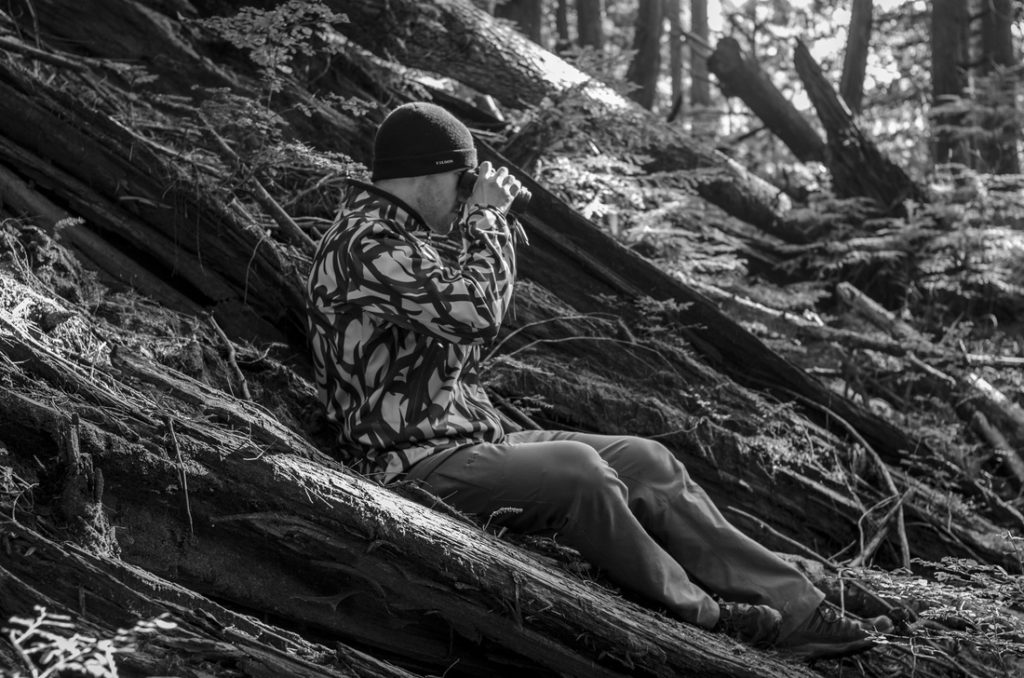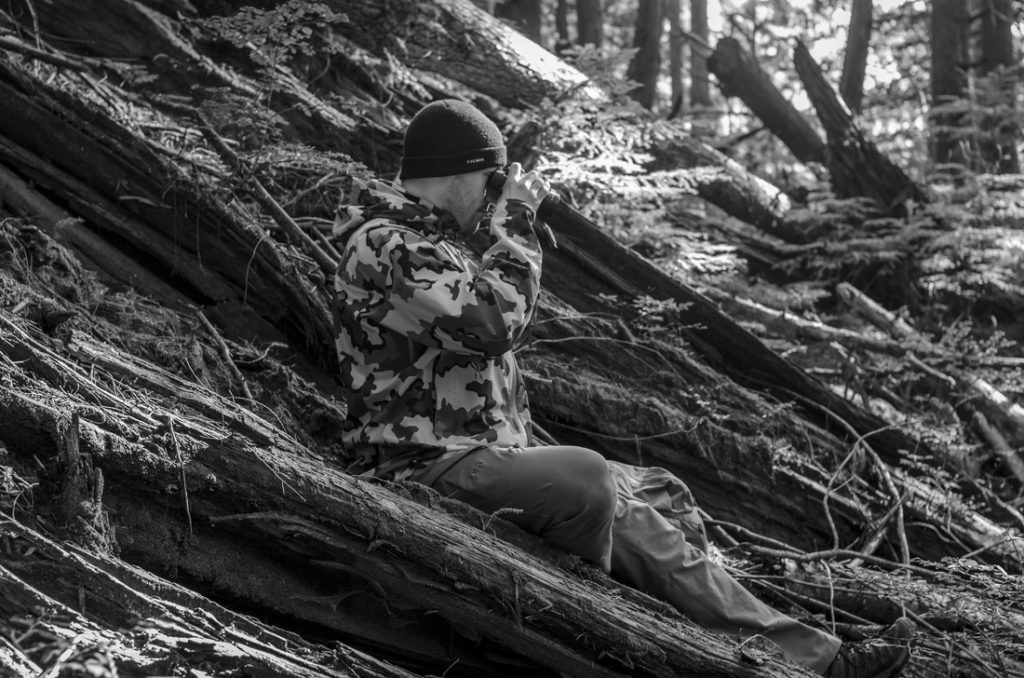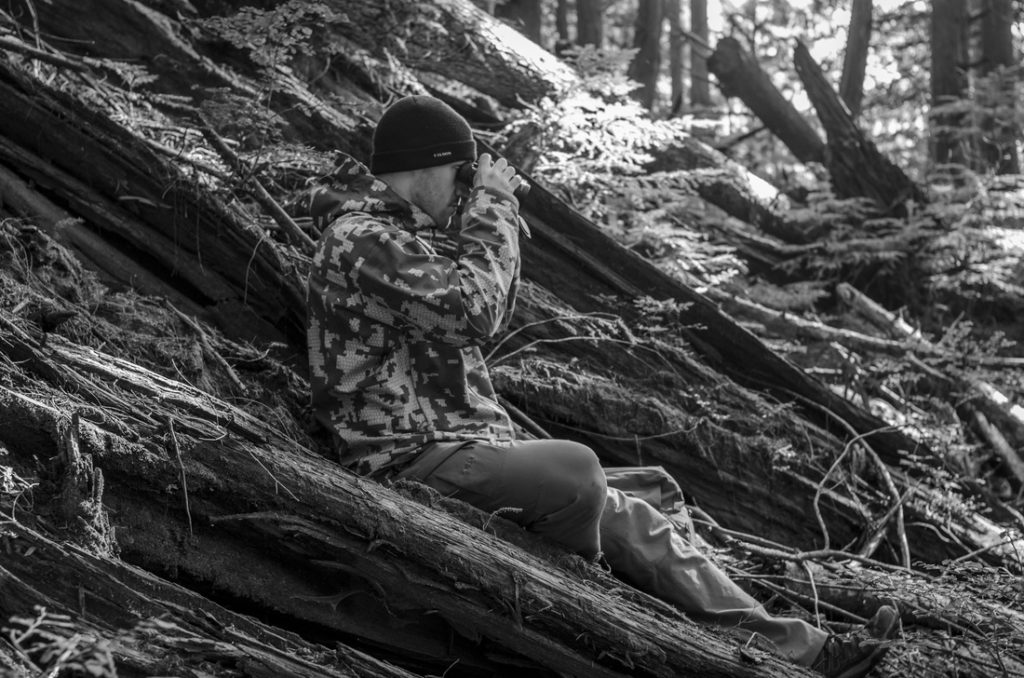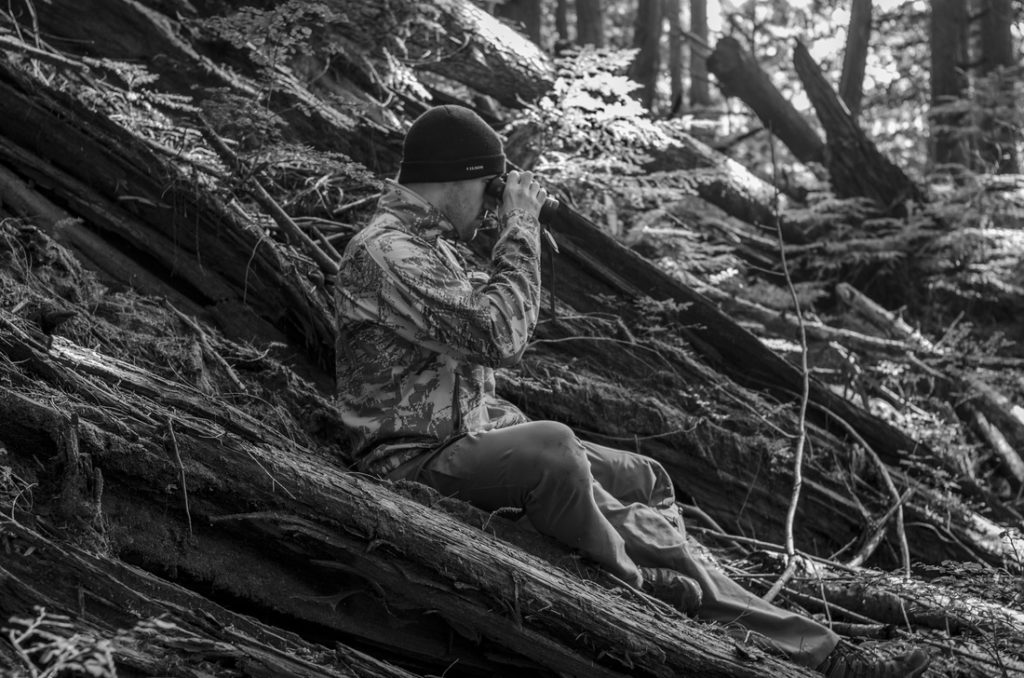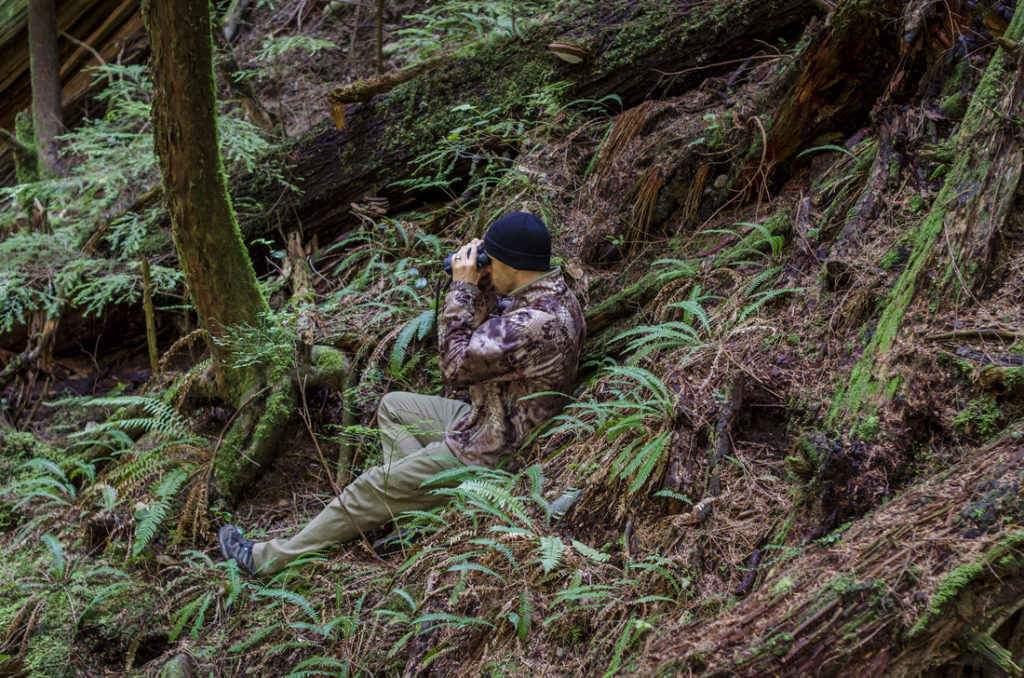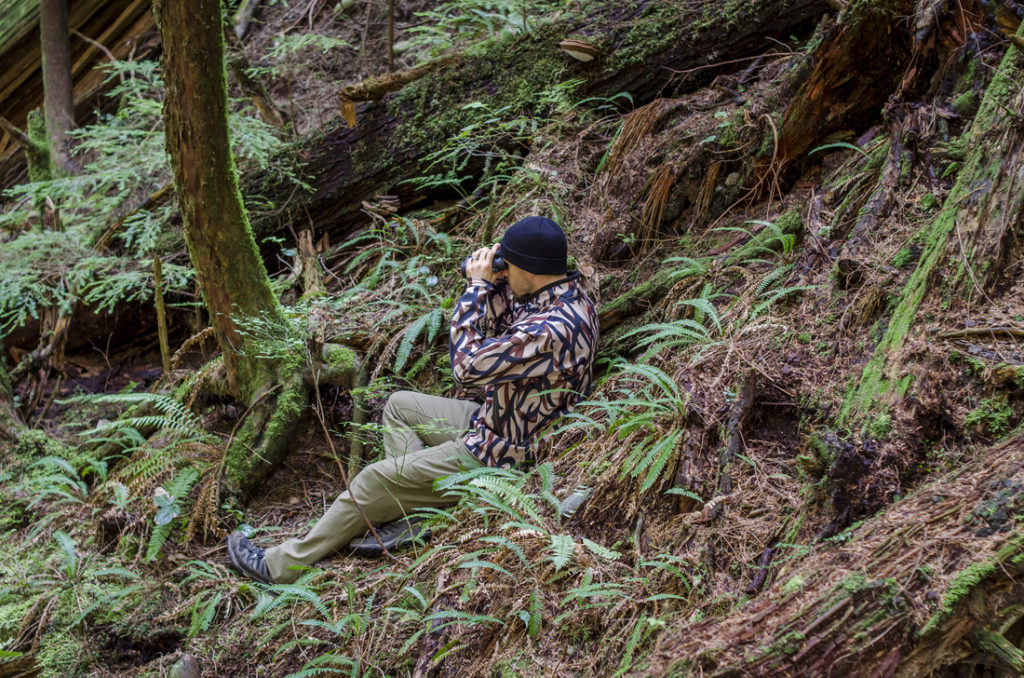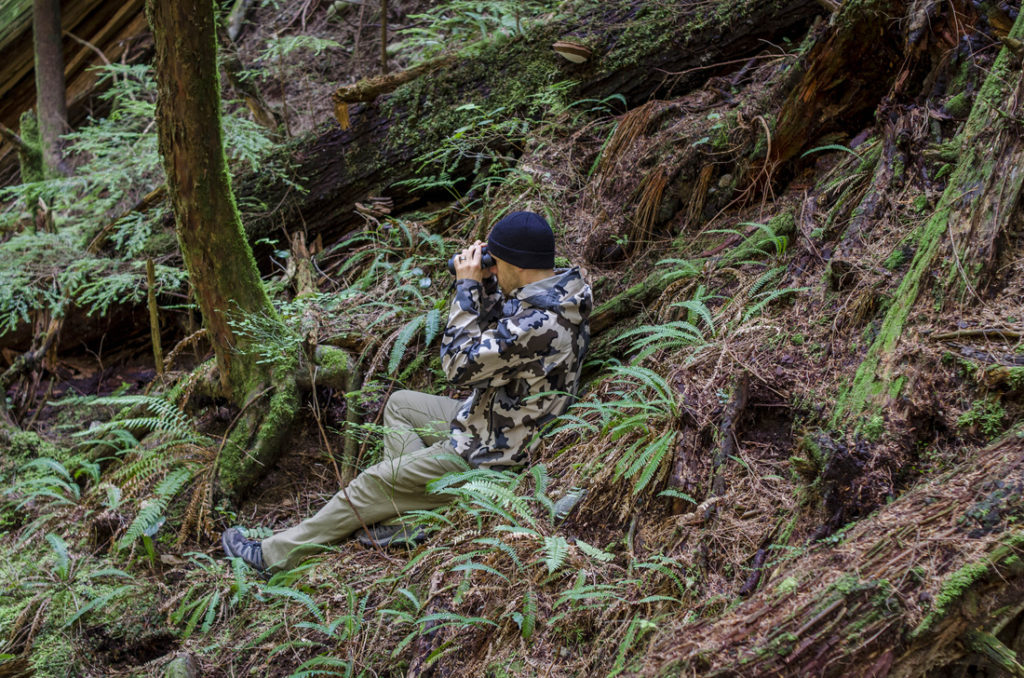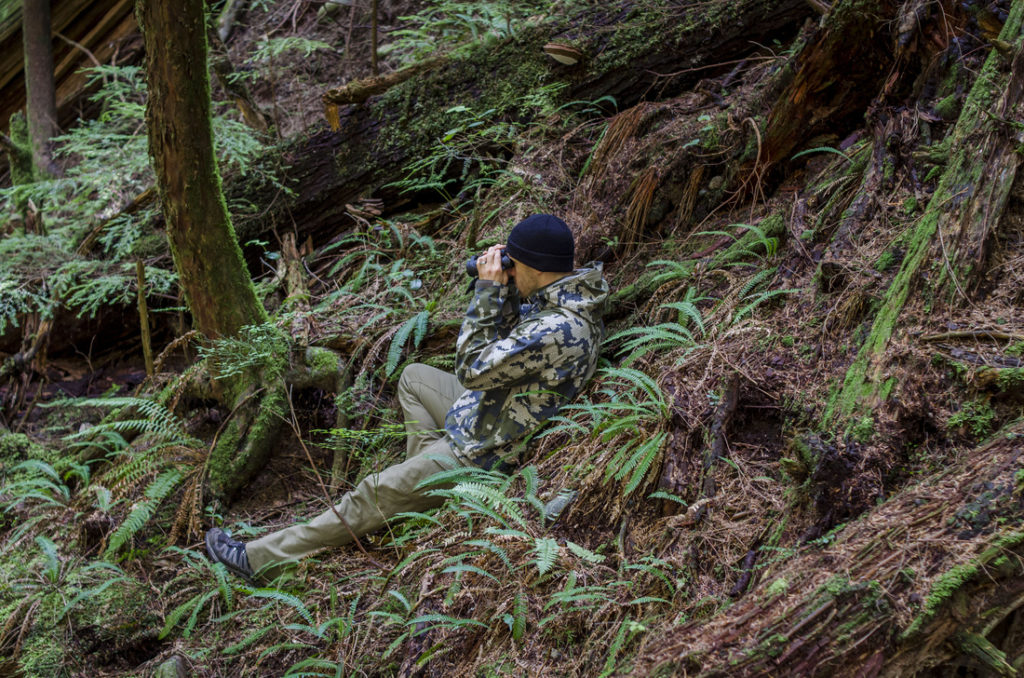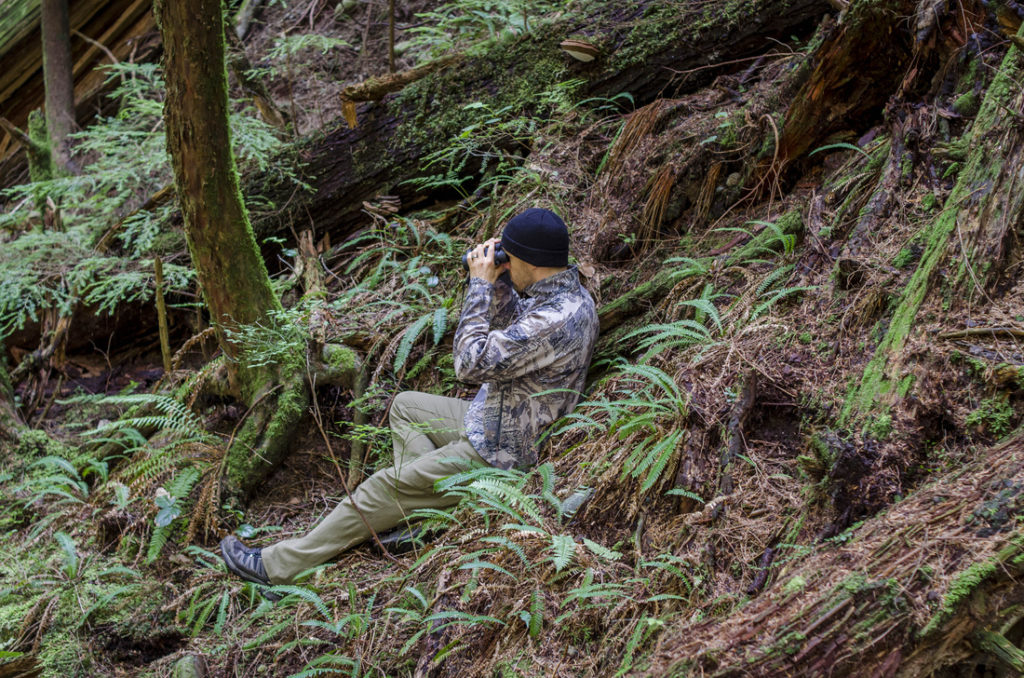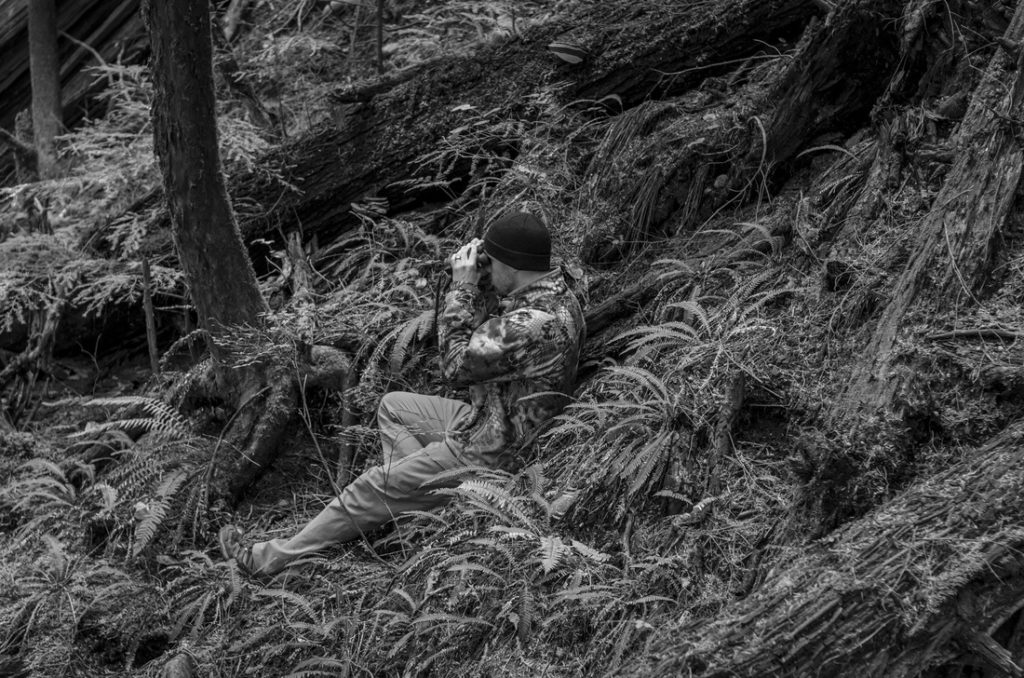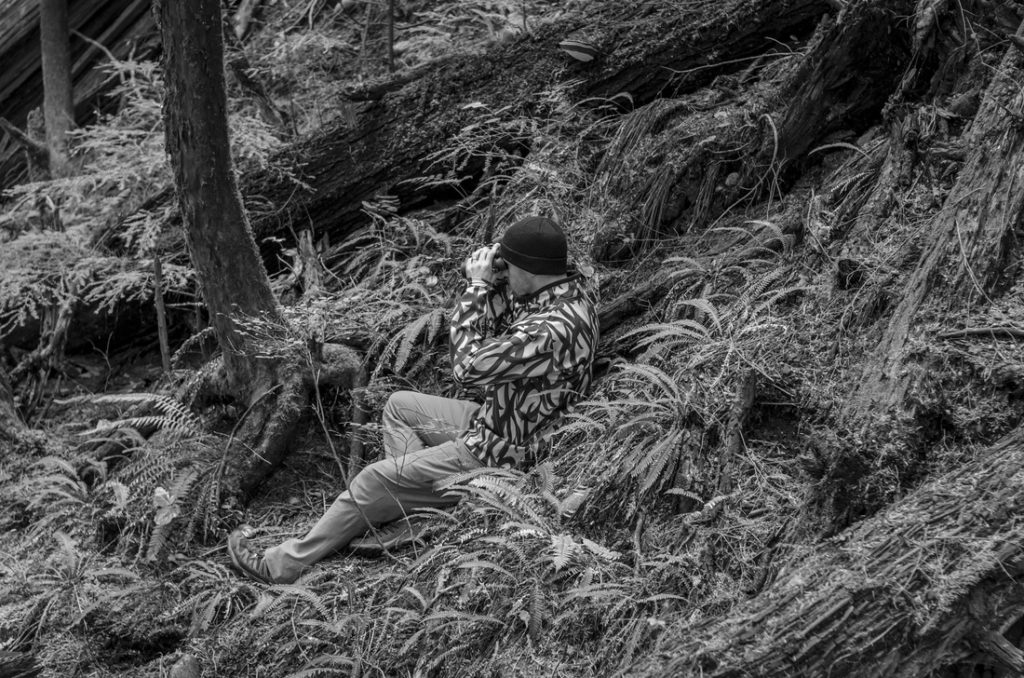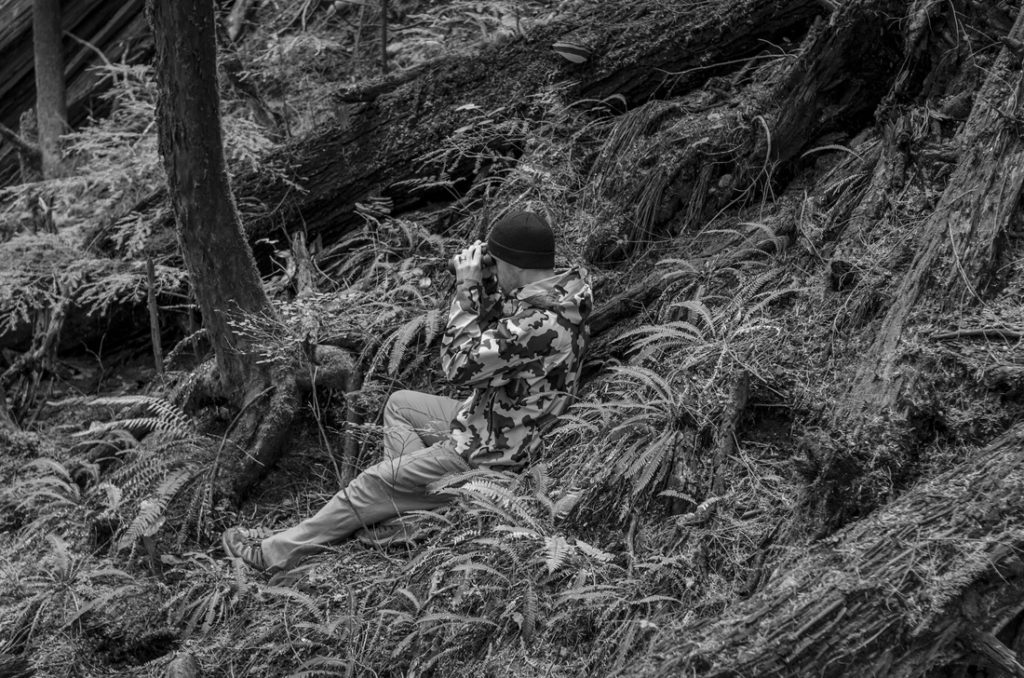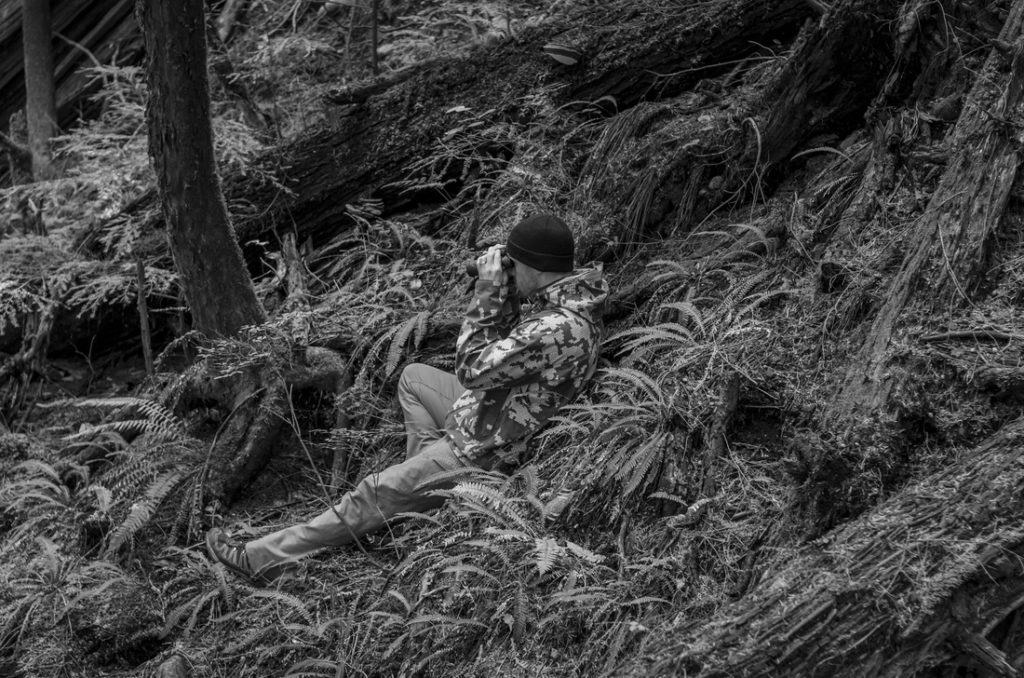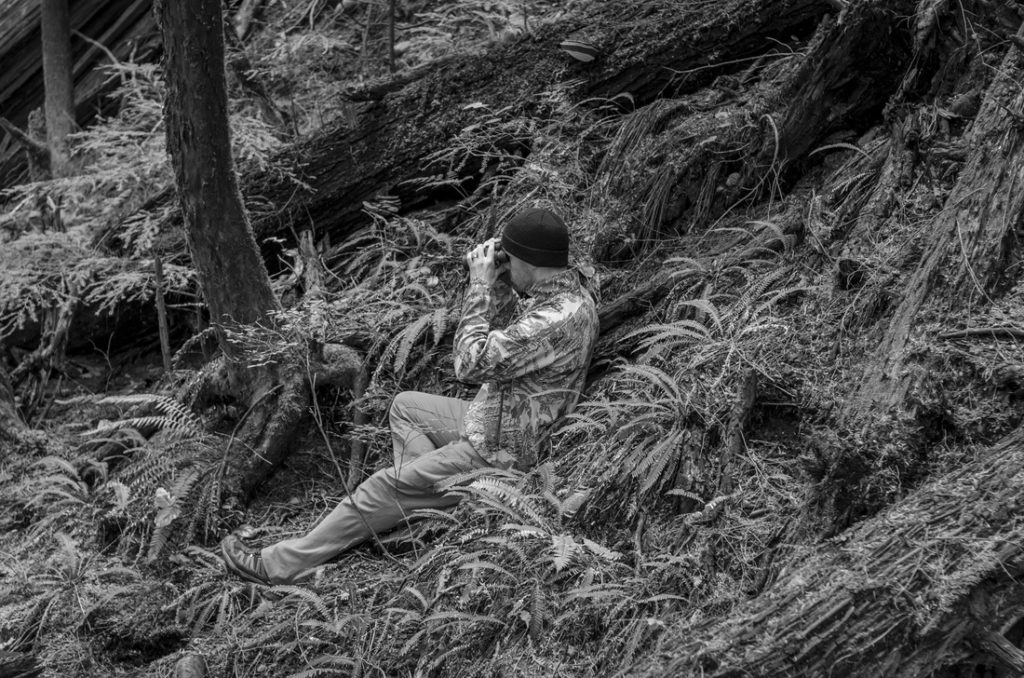The hunting apparel industry has evolved considerably over the past few years, nowhere more so than in the mountain hunting sub-segment. Technical fabrics designed to excel in higher output hunting scenarios have been combined with new age “concealment patterns”, each touted as being the most effective at masking the human form. Today’s hunter must navigate terms such as engagement distances, micro patterns, macro patterns, bi-level layering and even the biological science of animal vision when trying to determine which pattern and brand of apparel is most appropriate to their needs.
In many cases, the patterns are uniquely designed and suited to specific environments. Some excel in drier terrain with sparse vegetation, some above timberline and some in the shadows of the dark timber. The images found on the respective company websites can be helpful but in all cases the photos are clearly taken to enhance the effectiveness of the given pattern. And this is to be expected, if it were our pattern or our company we’d do the same.
To our knowledge however, no one has taken a truly objective, comparative look at the camouflage patterns prominent in the mountain hunting marketplace and more importantly across multiple environmental backdrops. As much as we love camo here at the JOMH, there are limits to one’s budget so we wanted to test which pattern proved to be the most versatile for the environments we hunt in.
Admittedly, we are a Pacific Northwest based publication so the environments we’ve selected may not be suited to those who primarily hunt the leeward side of the Continental Divide or the dry Southwestern states but in our opinion, those environments and the patterns that excel in them have been well documented. If however you hunt in Alaska, the Yukon or Northwest Territories, BC, Alberta or the Northwestern and coastal contiguous states your hunting likely takes you from dense valleys and river bottoms to above treeline and your camouflage must perform within a variety of engagement and environmental situations. Here in BC, the rain forest often reaches well above 5,000 feet so whether you’re hunting blacktails, muleys, elk, moose, black bears, grizzlies or in some areas even goats your camo needs to perform against a predominantly wet, green backdrop.
This article will be offered in two parts. In part one the patterns were photographed in a typical Northwestern rain forest setting and in part two we’ll go above timberline into truly exposed alpine terrain. It is not our intent to pick a “winner” here, only to offer a controlled, objective photographic comparison so YOU can make the best decision for your given hunting circumstances. The shots were taken at relatively close yardage (8 and 12 yards respectively) at a 35mm objective to allow a strict assessment of the individual patterns. Is there one pattern to rule them all? We’ll let you be the judge!
The jackets tested in order of appearance are the following:
Sitka 90% – Kuiu Chugach in Verde – Kuiu Chugach in Vias – First Lite North Branch in ASAT – Kryptek Cadog
We’d like to thank First Lite, Kryptek, Kuiu and Sitka Gear for participating in our comparative article.


